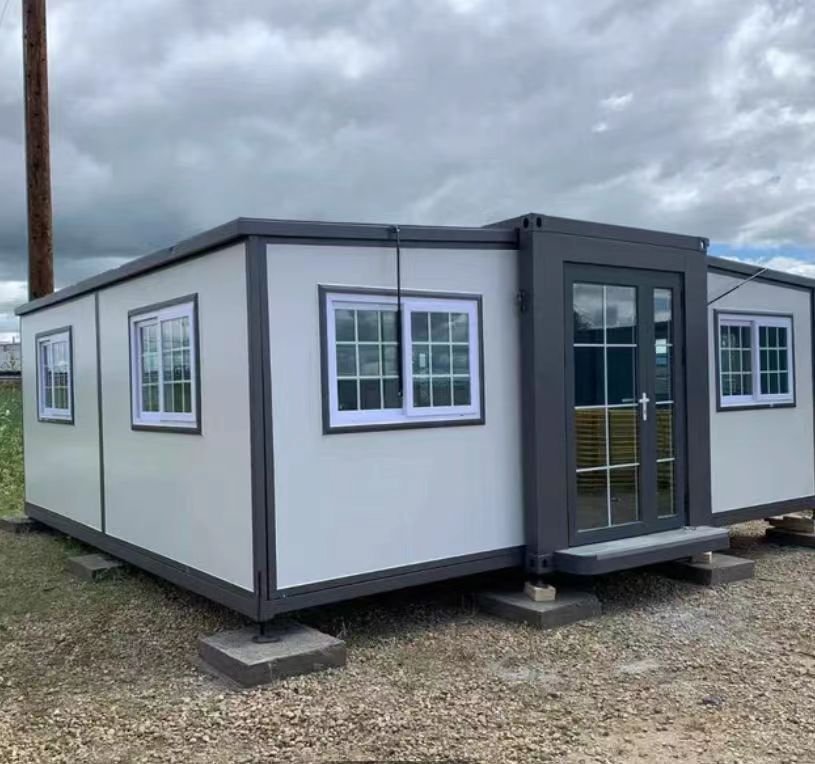
Why Certification Standards Matter
I have a quick hypothetical for you: say you’ve got this awesome container home design, and you are ready to start shipping this thing all around the world. You’re so excited—until you find out that the customs officials are saying that your product does not meet the necessary certification requirements.
Sending your container home to Europe? Behind on your pro forma projections because you did not hit your shipping deadlines or your containers were shipped back to the States? Oh, and let me guess, your customer no longer wants that house.
For people shipping container homes around the world, international certification is not a joke—it is a must-have to play in the major leagues.
Certification is what makes a container home meet all of the international safety, quality, and environmental standards and officially be “OK” to be shipped all around the world.
Whether you are shipping to Europe, the United States, or other parts of the planet, knowing these certifications is hubba-hubba.
Let’s talk about the key international certifications that apply to container homes.
Key International Certification Standards for Container Houses
1. ISO Certification (International Organization for Standardization)
- Purpose: Ensures global quality and safety compliance.
- Scope: Covers structural integrity, materials, electrical systems, and fire protection.
- Importance: Essential for worldwide recognition and export approval.
The ISO 9001:2015 standard focuses on quality management, ensuring that manufacturers meet consistent production and operational standards. Meanwhile, ISO 14001:2015 covers environmental management systems, ensuring sustainable practices in the production of container homes. ISO certification is a fundamental requirement for any container house manufacturer aiming for global business expansion.
2. CE Marking (European Economic Area - EEA)
- Purpose: Confirms compliance with EU health, safety, and environmental regulations.
- Scope: Mandatory for products sold in the European Union and EEA countries.
- Importance: Without CE marking, container homes cannot be legally sold in the EU.
CE marking is crucial for manufacturers targeting the European market. It ensures that the container house meets European safety standards for materials, structural integrity, and energy efficiency. Even if your product is compliant with other international standards, lacking CE marking can bar entry into the EU market.
3. UL Certification (Underwriters Laboratories - U.S. & Canada)
- Purpose: Guarantees that container house components meet safety standards.
- Scope: Focuses on electrical systems, fire resistance, and structural integrity.
- Importance: Critical for approval in North American markets.
UL certification is particularly important for container homes being exported to the United States and Canada, as it ensures that electrical and safety components comply with local regulations. Many U.S. building authorities require UL-listed components before issuing occupancy permits.
4. CSC (Convention for Safe Containers) Certification
- Purpose: Ensures safety and durability for containers used in shipping.
- Scope: Focuses on the structural integrity of shipping containers used for housing.
- Importance: Mandatory for container homes transported via international shipping routes.
The CSC certification is particularly relevant for those using repurposed shipping containers for housing. It guarantees that the container is structurally sound, resistant to harsh weather conditions, and fit for transportation.
5. Local Building Codes & Industry-Specific Certifications
In addition to international certifications, container homes must comply with local regulations:
- IBC (International Building Code) & IRC (International Residential Code - U.S.) – Mandatory for container homes in the United States.
- California Building Code (CBC) – If shipping to California, additional earthquake and fire safety requirements may apply.
- ABS, BV, DNV, DNV GL, LR – Maritime industry certifications, often required for floating or offshore container homes.
These local standards vary by country, and compliance is crucial for successful sales and installation.
Further Exploring Certification Requirements
What Are the Main Differences Between ISO, CE, and UL Certifications?
The three certifications serve different purposes:
- ISO: Focuses on manufacturing quality and environmental impact.
- CE: Required for the European market, ensuring compliance with EU safety laws.
- UL: Ensures safe electrical and fire standards, primarily for the U.S. and Canada.
ISO certification helps manufacturers meet global quality benchmarks, while CE and UL focus on regional market requirements.
How Does the Certification Process Vary Between Different Countries?
Each country has its own certification process and regulatory requirements:
- Europe: CE marking is mandatory for entry into the EU market.
- United States: Compliance with IBC and UL certification is necessary.
- China & Developing Countries: May have fewer restrictions but still require basic ISO and safety compliance.
For manufacturers, understanding these differences is crucial for planning market entry.
Are There Any Specific Certifications Required for Container Houses in the United States?
Yes. Besides UL certification, container homes in the U.S. must comply with:
- International Building Code (IBC)
- International Residential Code (IRC)
- National Electrical Code (NEC)
These regulations ensure that container homes meet U.S. safety and quality standards, preventing legal and logistical issues.
What Are the Benefits of Obtaining Multiple Certifications for a Container House?
Having multiple certifications offers significant advantages:
- Easier Market Entry – Certified products face fewer trade barriers.
- Higher Consumer Trust – Buyers prefer products that meet recognized safety standards.
- Fewer Legal Issues – Compliance reduces the risk of fines or shipment delays.
- Competitive Advantage – Certified container homes attract more business opportunities.
For international manufacturers, investing in multiple certifications can open doors to new markets and increase profitability.
How Do Certification Standards Impact the Cost of Container House Construction?
While obtaining certification increases production costs, the benefits outweigh the expense:
- Higher compliance costs – Ensuring that materials and components meet international standards.
- Inspection and testing fees – Certifications require audits and regular inspections.
- Long-term ROI – Certified products sell faster and command higher prices.
Many buyers are willing to pay a premium for certified container homes, making certification a smart investment for manufacturers.




